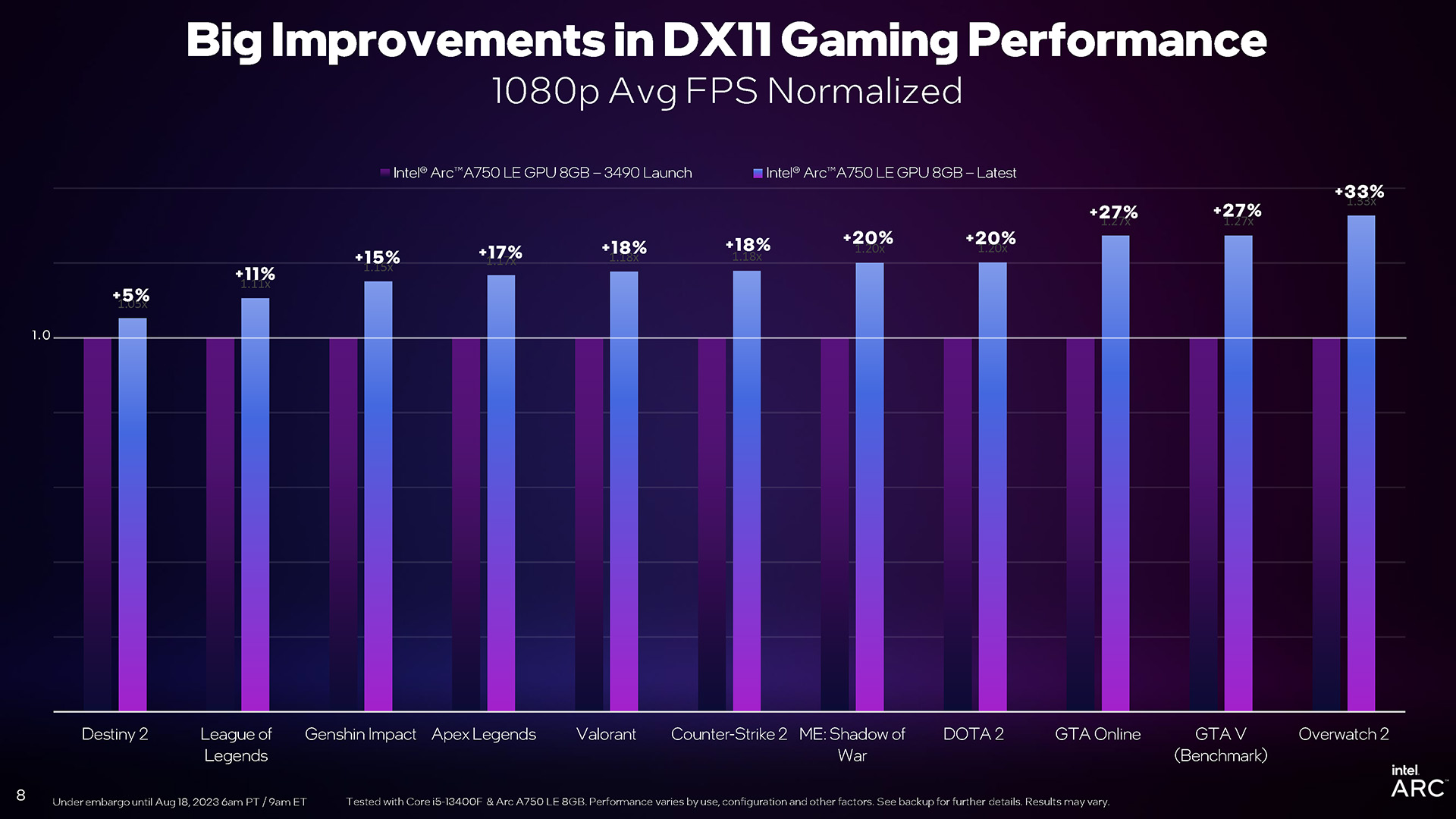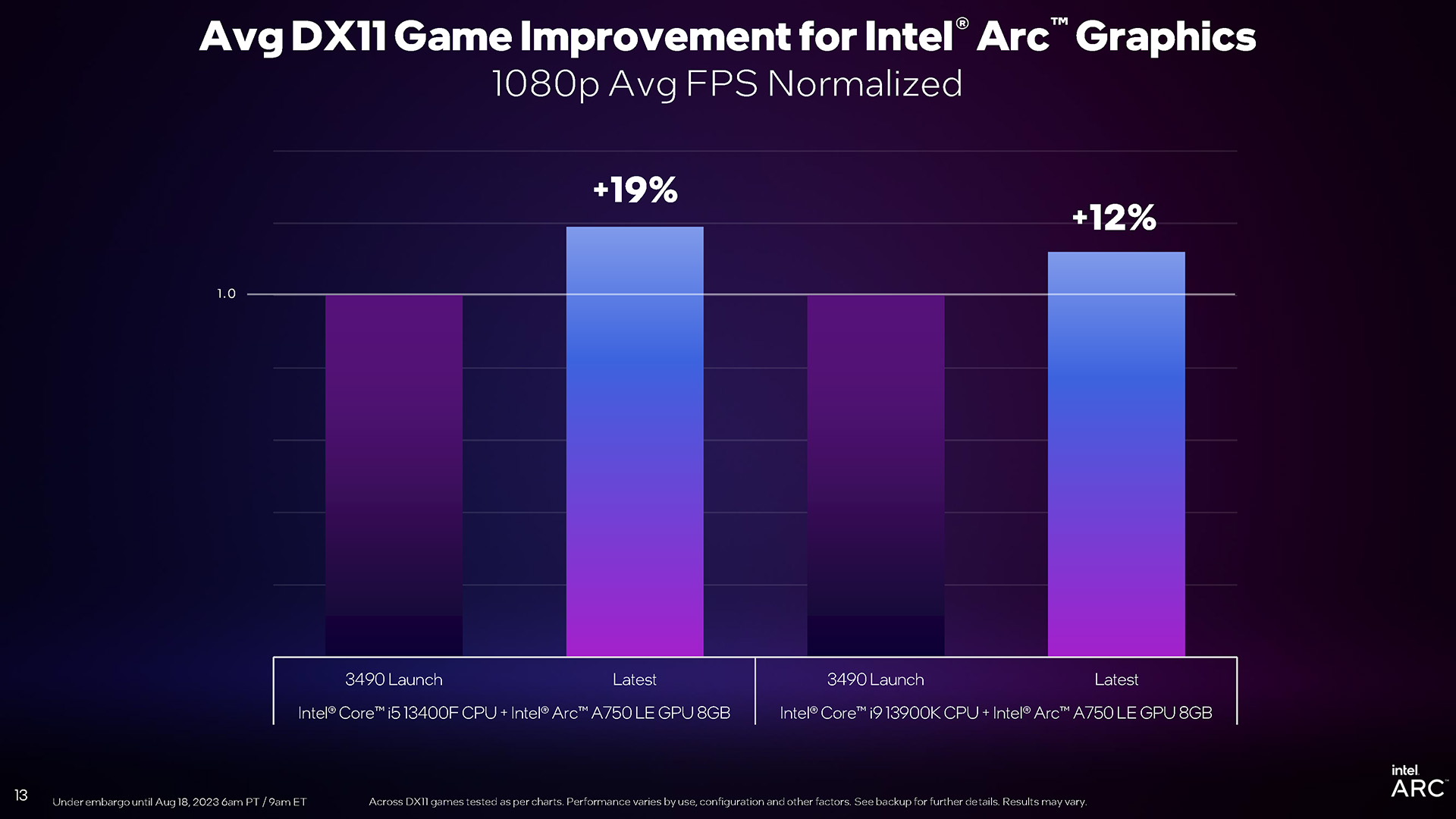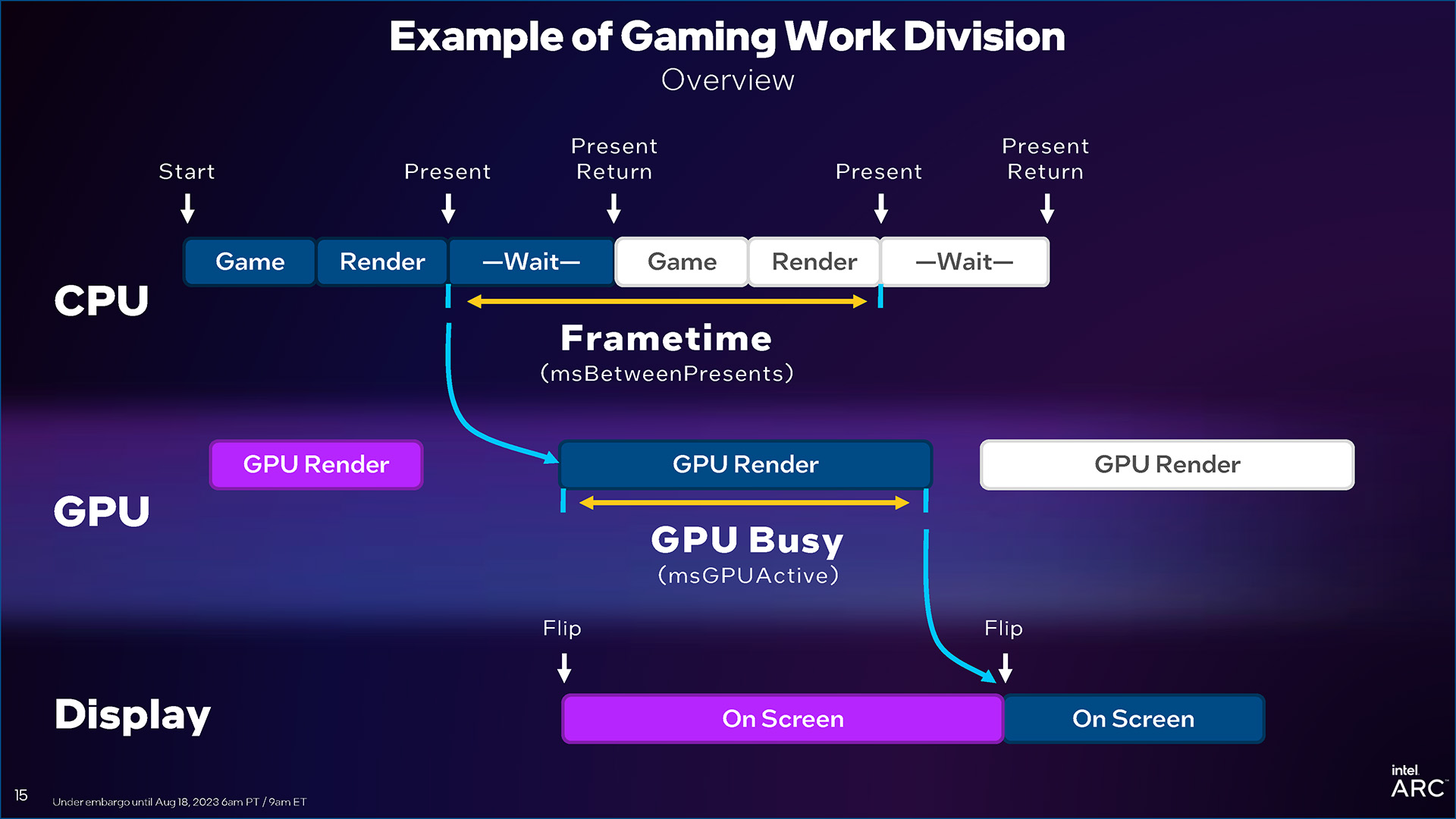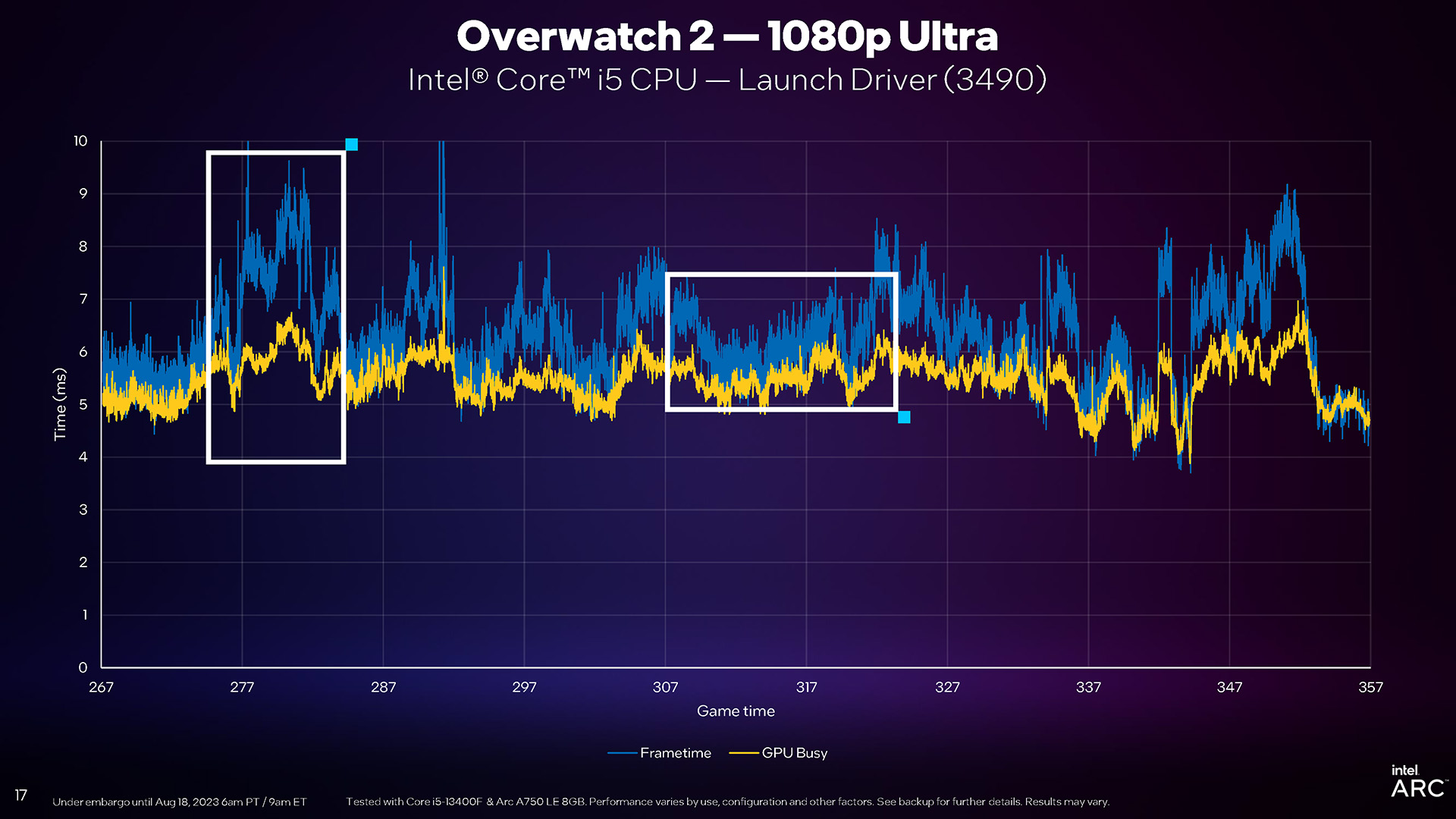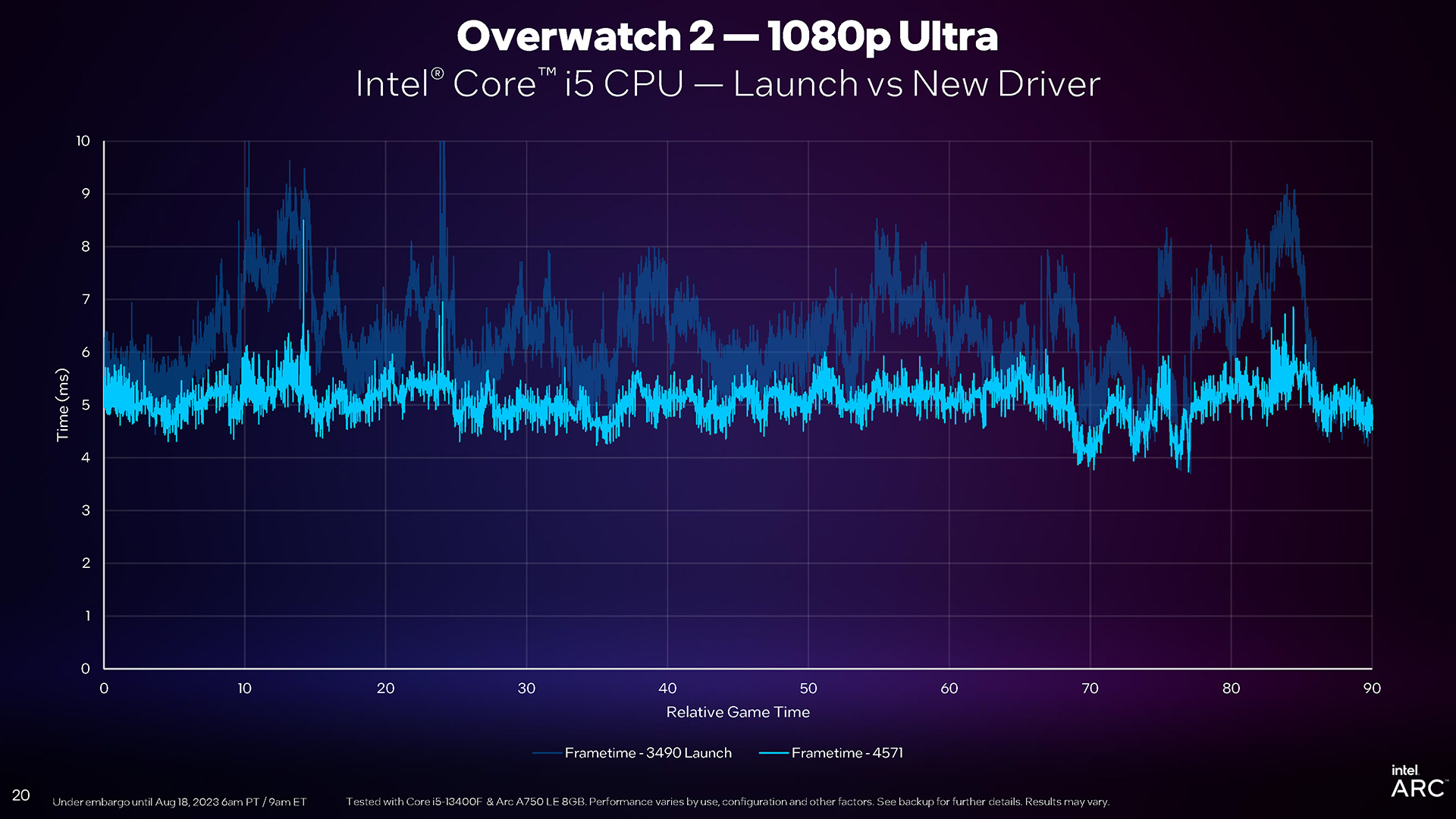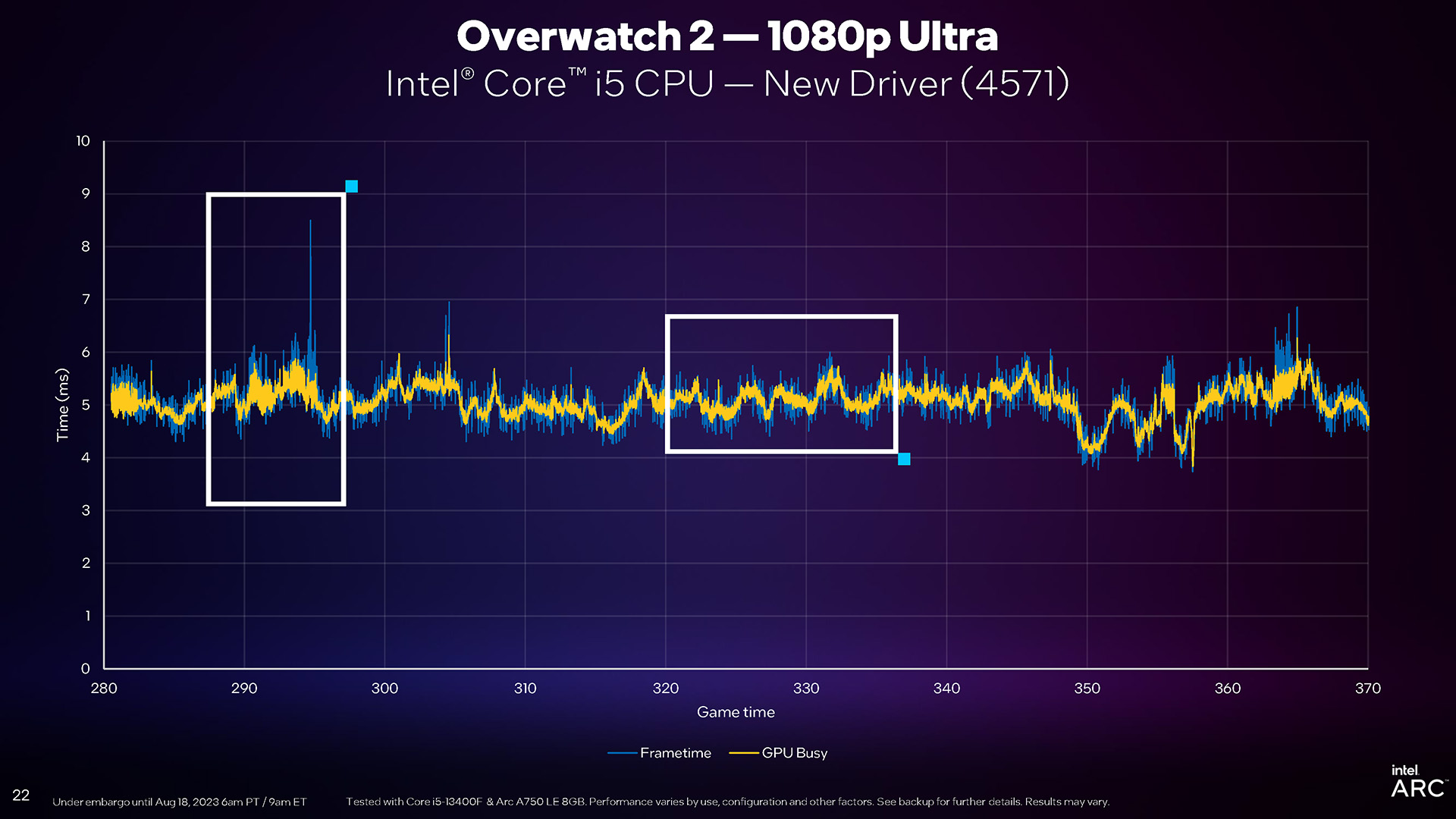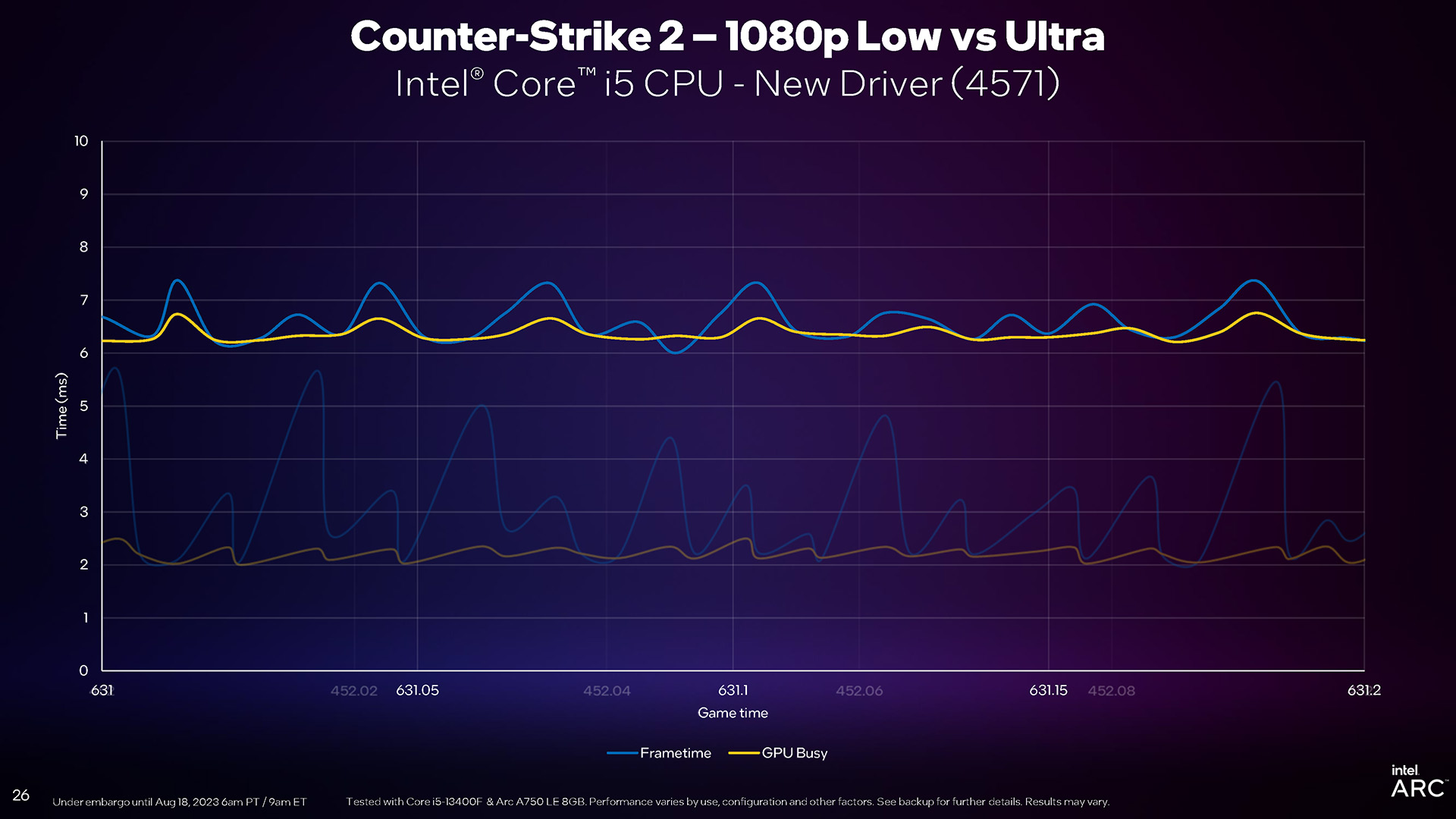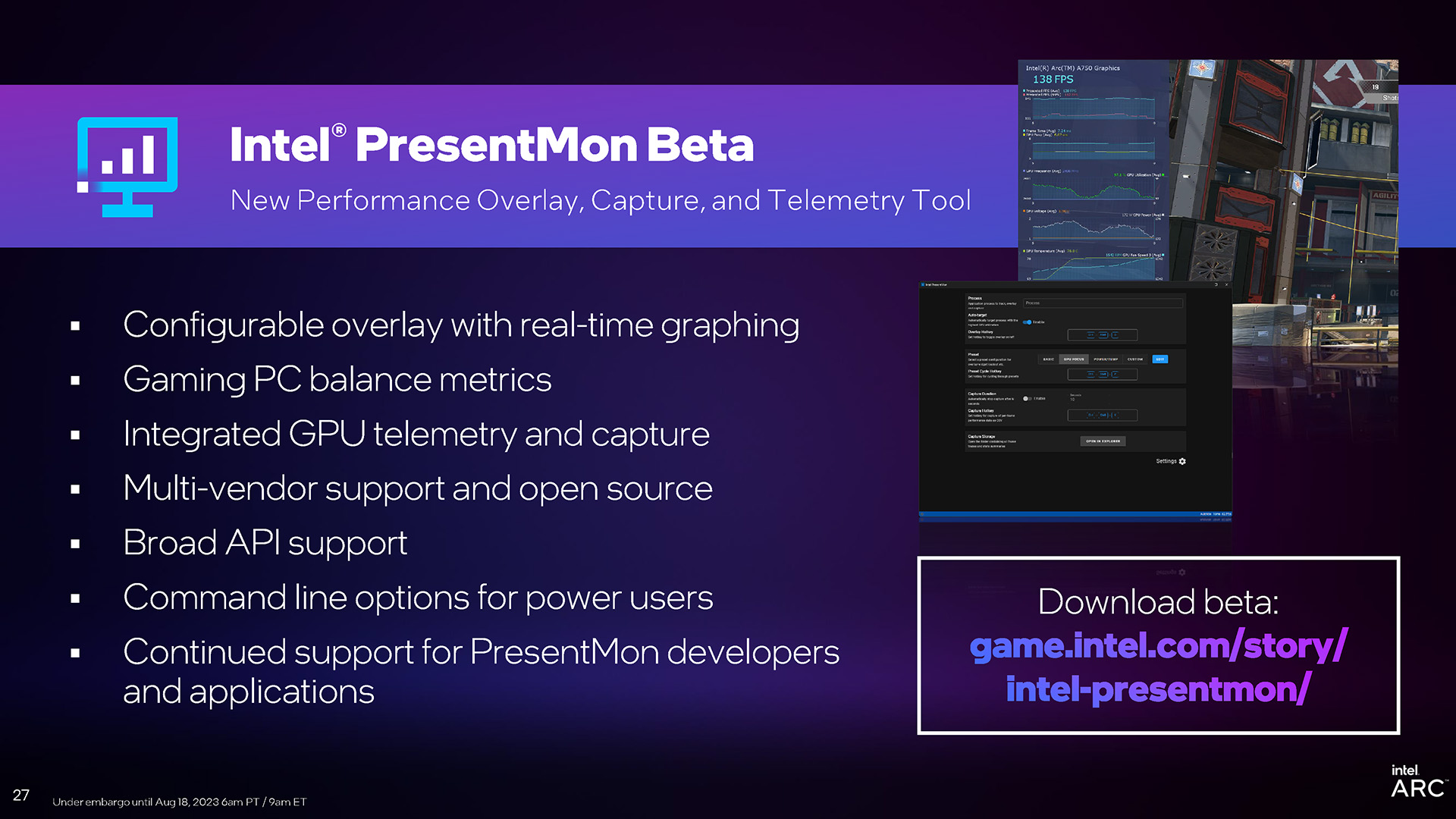- Qualcomm Launches Snapdragon 4 Gen 2 Mobile Platform
- AMD Launches Ryzen PRO 7000 Series Mobile & Desktop Platform
- Intel Launches Sleek Single-Slot Arc Pro A60 Workstation Graphics Card
- NVIDIA Announces Latest Ada Lovelace Additions: GeForce RTX 4060 Ti & RTX 4060
- Maxon Redshift With AMD Radeon GPU Rendering Support Now Available
Intel Arc Graphics Update: Boosted DX 11 Performance, Overhauled PresentMon

In its latest quarterly Arc graphics update, Intel has released a new driver which can boost performance in DirectX 11 titles upwards of 19%. It also released a revamped version of its popular PresentMon performance analyzing tool, adding a valuable new metric to gauge how busy your GPU is keeping relative to the frametimes.
Being a company laser-focused on performance, it’s no surprise that Intel loves talking about it – whether it involve its CPUs, or GPUs. That became ever-more evident after the launch of its Arc-series graphics cards last year, and it was for a reason. While Arc’s debut was rough around the edges, vast improvement was seen in the months that followed as more optimized drivers released. Today, based on what we see being said around the community, Arc is in a great state.
When we look back to the Arc A770 and A750 launch, it’s hard to believe that it hasn’t even been an entire year. So much has happened with Arc since launch, that it’s felt much longer. In all of that time, Intel’s released 30 drivers with 57 game-specific “Game On” performance optimizations. We saw one driver drop with an up to 39% performance improvement in DirectX 9 titles, and we’ve also seen XeSS make it into over 70 titles.
Nonetheless, the improvements are not stopping, and Intel proves that with its latest quarterly update. In the same vein as the aforementioned DirectX 9 performance boosts, Intel has once again rearchitected its driver to bring bolstered performance to DX11 – an up to 19% improvement. Intel notes that not every DX11 game will be guaranteed to see an improvement in this update, as driver profiles for each title will need to be refreshed – something that will be tackled in full over time.
Normally, when we see performance information like that found in the chart above, the test PC is equipped with a top-end CPU option. That’s not the case here. Instead, Intel used a Core i5 CPU for the benchmarking task, to help highlight the fact that you don’t need more than a mid-range processor to get great performance out of Arc. That’s highlighted here:
Intel notes that its graphics drivers have long been CPU bound as the only thing the company once offered was integrated graphics. As alluded to earlier, the company has reengineered much in the driver since then, and that’s led to improved percentile frame rates, and boosted averages. To be clear: you’re not going to see less performance when using a higher-end CPU; you’re just going to see less of an overall gain as you would on a CPU that has fewer resources to work with.
With the slide below, we see a basic overview of how a CPU and GPU get their work done while gaming. On the CPU side, calculations required (eg: physics, orientation) for the next frame are calculated, and once it passes through a render, a “Present” state is initiated, and then the frame is delivered. The amount of time between one Present state and the next is referred to as “msBetweenPresents” when measured through Intel’s PresentMon. Recording each msBetweenPresents value enables robust frametime analysis – important for reporting percentile frame rates.
Before moving further, we should explain what PresentMon is. It’s a software tool released in in 2018 that quickly became adopted by not only performance testers (aka: benchmarkers), but also third-party vendors for integration into their own apps. We admit that until this particular update from Intel, we had just assumed PresentMon was a tool built into Windows. As the company has made it a point to rebrand the tool to “Intel PresentMon”, we can’t help but feel like we haven’t been alone.
PresentMon can currently be found in tools like AMD’s OCAT, CapFrameX, and also NVIDIA’s FrameView. This overall graphics update includes a new version of PresentMon which includes a “GPU Busy” metric. The developers behind CapFrameX wasted no time acknowledging that the newest version of PresentMon will be supported soon.
Nonetheless, the latest version of PresentMon includes the GPU Busy value, which represents how busy the GPU is relative to the frametime. In an ideal situation, both the CPU and GPU would be doing their work without holding the other up, but finding such balance is downright challenging.
Using the launch driver, and Overwatch 2, Intel highlights that the CPU’s wait times were notably worse than the GPU’s:
With efficiency improvements made to the driver, the frametime becomes better all-around, and much more stable:
When taking the new frametime and pairing it up with the GPU Busy value, Intel shows that with the right combination of CPU and GPU, you can achieve truly efficient operation:
With the above result, it effectively means neither the CPU or GPU had to wait on each other very much, which is exactly what you’d want to see. Not only does the average frame rate go up, but percentile minimums will improve, as well. Intel also showed a comparison like this with another esports title (Counter-Strike 2) that can generate hundreds of FPS, where if your settings are too low, it could actually deliver more sporadic frametimes (ultra on top, low on bottom):
As mentioned before, Intel is behind the PresentMon tool, and while up to this point, the company itself hasn’t offered its own front-end for it, its competitors have. That changes now, with the launch of the Intel PresentMon Beta. Like CapFrameX, it supports all GPU vendors, and offers things like customizable overlays, integrated telemetry, and for developers, command line use:
Anyone who wants to give this new tool a try can grab the beta right here. As mentioned above, if you prefer a tool you already use, chances are they will eventually migrate to the newest version of PresentMon. We’d wager CapFrameX will be first out the door, as no time was wasted announcing the move.
Overall, this is quite a few words for a few new features in a graphics update, but we felt compelled to tackle this in good detail because Intel has done some really cool things the past year, and the momentum doesn’t seem to be slowing down any. We look forward to seeing what’s up its sleeves for the next update.
Support our efforts! With ad revenue at an all-time low for written websites, we're relying more than ever on reader support to help us continue putting so much effort into this type of content. You can support us by becoming a Patron, or by using our Amazon shopping affiliate links listed through our articles. Thanks for your support!




